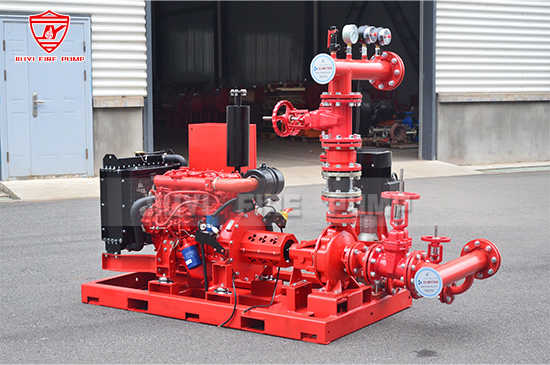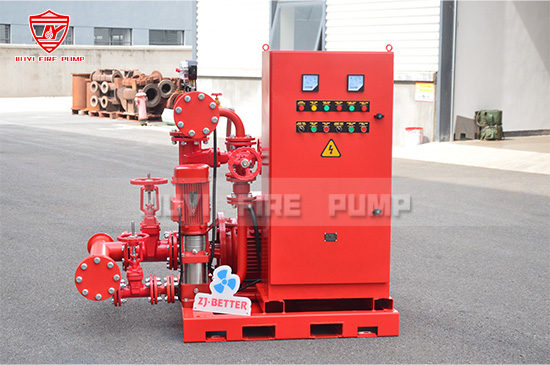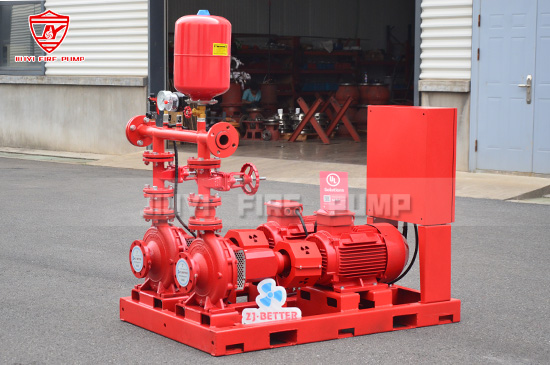When it comes to fire protection systems, one of the most critical elements is selecting the right size fire pump. A fire pump is responsible for supplying water to a fire suppression system, and its capacity must be appropriate to meet the demands of a specific building or facility. Selecting the right fire pump size ensures effective firefighting operations and compliance with building codes and standards.
Understanding fire pump sizing requires knowledge of a few key factors that can impact the performance of the fire pump system. In this article, we will explore how to determine what size fire pump you need, considering critical factors like flow rate, pressure, and the layout of your fire protection system.

The primary function of a fire pump is to ensure that the sprinkler and other fire protection systems receive adequate water pressure and flow during an emergency. If the pump is too small, it won’t provide enough water pressure or flow, which can jeopardize the effectiveness of the fire suppression system. If it’s too large, you may incur unnecessary energy costs, and the pump may not function optimally.
Choosing the correct pump size is therefore essential to maintaining a balance between effective firefighting capacity and operational efficiency.
The flow rate is a critical factor when sizing a fire pump. It refers to the volume of water the fire protection system needs to deliver per minute to control a fire. The required flow rate is typically specified in gallons per minute (GPM) or liters per minute (LPM).
To calculate the required flow rate, consider the following factors:
Sprinkler System Type: The type and number of sprinklers installed in a building will influence the water flow needed. For example, a standard sprinkler system in an office building might require a different flow rate than a high-rise building or industrial facility.
Building Size: Larger buildings, especially those with multiple floors, may require higher flow rates to reach higher elevations.
Occupancy Type: Certain building types, such as hospitals or schools, may have higher fire protection needs, which will influence the required flow.
Typically, the National Fire Protection Association (NFPA) provides guidelines for minimum flow requirements based on occupancy type and hazard level.
Water pressure is another vital consideration in fire pump sizing. The pressure is required to distribute water through the pipes, hoses, and sprinklers effectively. Fire pumps need to supply enough pressure to ensure water reaches all areas of the building, especially higher floors.
Fire pump pressure is measured in pounds per square inch (PSI). Key factors to consider include:
Elevation: The higher the building, the higher the pressure required to pump water to the upper floors.
Pipe Length and Diameter: The size of the pipes and their length also influence pressure. Longer pipes and smaller diameters cause more resistance, requiring the pump to generate more pressure to maintain the necessary flow.
Sprinkler Head Pressure: Each sprinkler head has a specific pressure requirement, and the pump must provide enough pressure to meet those needs across the entire system.
The total pressure requirement for the fire pump will include the friction loss from the pipes, fittings, and sprinklers, as well as the required pressure for the fire sprinkler heads themselves.
NPSH is a measure of how much suction head is available for the pump to operate effectively. It ensures that the fire pump can function without cavitation, which occurs when the water vaporizes due to insufficient pressure, leading to pump damage.
A fire pump must have adequate NPSH to ensure smooth operation. The NPSH available is determined by the height and condition of the water source, and the NPSH required is specified by the pump manufacturer. Ensuring that these two values are balanced is essential for pump longevity and reliability.
Various building codes and fire protection standards specify the minimum requirements for fire pump sizing. One of the key standards is NFPA 20, which provides guidelines on how fire pumps should be selected and installed. Local building codes and insurance company requirements also play a role in determining the size of the fire pump.
Some of the most common code requirements include:
Flow rate calculations based on occupancy type
Pressure requirements for different building heights
Emergency power supply requirements to ensure the pump can operate during power outages
It is important to consult these codes and regulations before making a final decision on pump sizing.
Pump Type: Different types of fire pumps, such as diesel, electric, or horizontal/vertical pumps, may have different sizing and capacity options. The type of pump chosen will depend on factors like power availability, fuel supply, and space constraints.
Redundancy and Backup Systems: In critical applications, you may need to design a fire pump system with redundancy, which could involve adding additional pumps to ensure the system remains operational in case of failure.
System Testing: Regular testing of the fire pump system will help verify that the pump is operating at the required flow rate and pressure levels, ensuring that the fire protection system is always ready in case of an emergency.

Once you've considered the factors mentioned above, follow these steps to choose the right size fire pump:
Conduct a Hazard Analysis: Assess the fire risk level in the building or facility. This will guide you in determining the required flow rate and pressure levels.
Calculate Required Flow and Pressure: Use formulas and guidelines provided by NFPA 20 and other local codes to calculate the required flow and pressure.
Select the Pump Type: Choose a pump type (e.g., diesel, electric) based on the available power source and the nature of the facility.
Consult with a Fire Protection Engineer: A fire protection engineer can help verify calculations and ensure that the chosen fire pump meets all required standards.
Review Manufacturer Specifications: Ensure that the selected fire pump has the capacity to meet the desired flow and pressure levels. Consider manufacturers' performance charts to match the pump with the system requirements.
Test the System: Once installed, test the fire pump to ensure it performs according to the specified requirements, including adequate flow rate and pressure.

Choosing the right size fire pump is essential for maintaining an effective fire protection system. By considering factors such as flow rate, pressure requirements, building size, and code regulations, you can ensure that your system operates efficiently and effectively. Always consult with professionals and refer to industry standards like NFPA 20 to guarantee your fire pump system provides optimal protection.
Proper sizing not only ensures the safety of occupants but also maximizes the operational efficiency of your fire pump system.